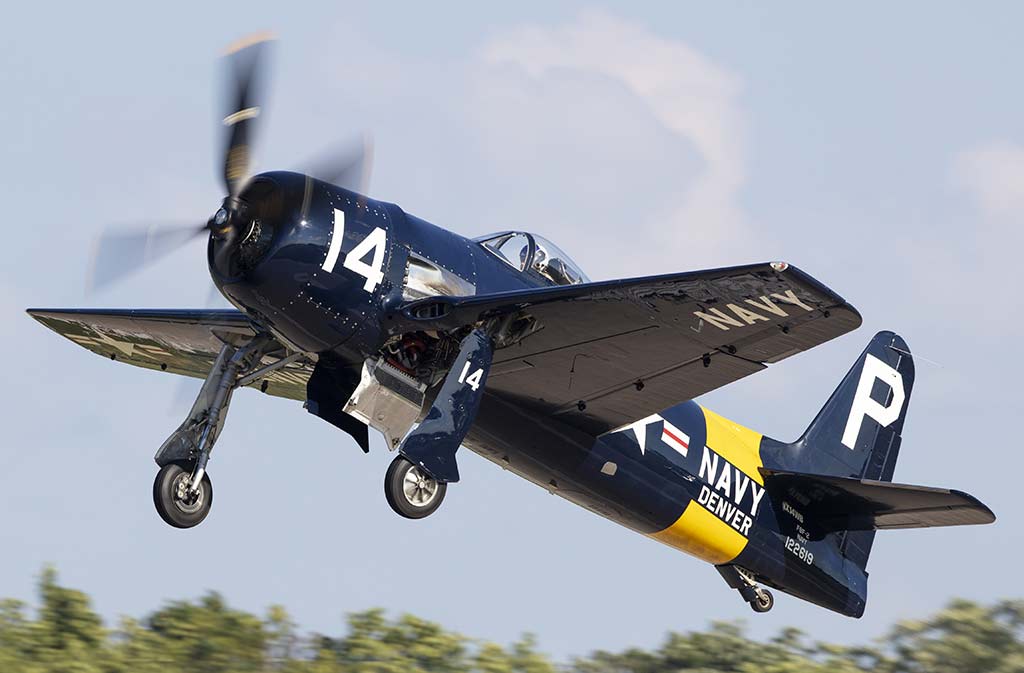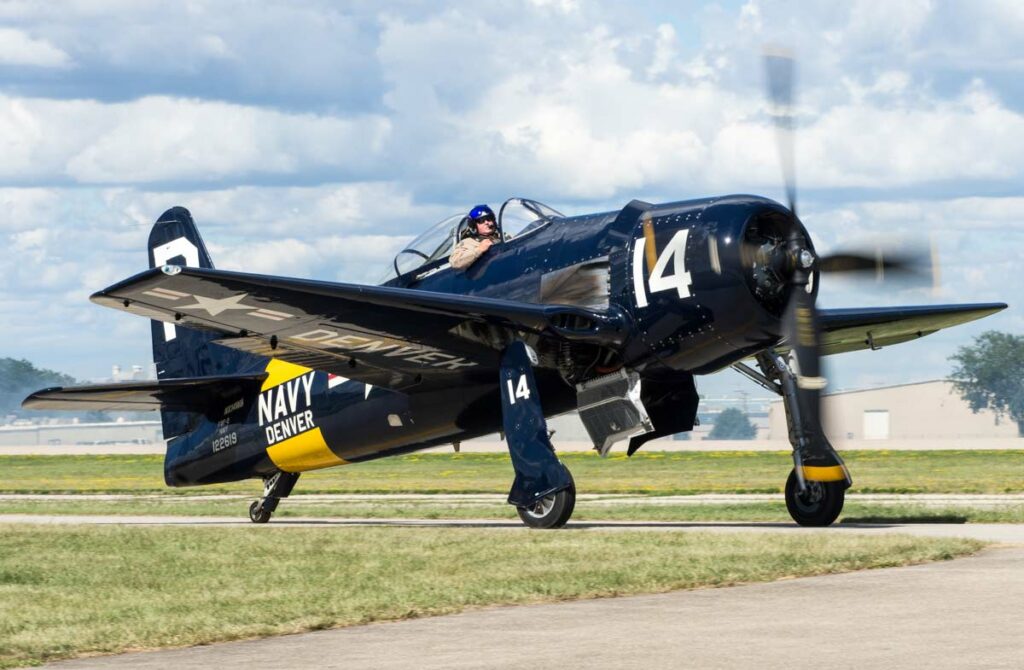The Grumman F8F Bearcat, a compact, piston-engine fighter, excelled in speed, climb rate, and maneuverability, with a 2,100 hp Pratt & Whitney R-2800 engine.
This article provides a comprehensive overview of the Grumman F8F Bearcat, an iconic American fighter aircraft of the late WWII era. It delves into the developmental history, emphasizing the contextual needs and goals that shaped its creation. The design section details its technical aspects, showcasing how these features impacted its performance and utility. A thorough analysis of its performance benchmarks is provided, comparing it to contemporaries. The military use and combat history section details its armament, operational use, and legacy, including its impact on and off the battlefield.
The Grumman F8F Bearcat represents a pinnacle in piston-engine fighter design, marking the end of an era in aviation history. As a product of WWII technology, it embodied the rapid advancements in aircraft design and performance that characterized this period.

History of the Development of the Grumman F8F Bearcat:
The Grumman F8F Bearcat’s development story is a tale of technological innovation amidst the global turmoil of the 1940s. Its genesis lay in the urgent need for superior air superiority fighters during World War II. As Allied forces grappled with formidable Axis aircraft, the demand for a fighter that combined agility, speed, and firepower intensified.
The development program was launched by the United States Navy, seeking a successor to the famed F6F Hellcat. Grumman, already renowned for its robust fighter designs, initiated the Bearcat project in response. The first flight of the F8F Bearcat occurred on August 21, 1944, marking a significant milestone in its development.
The Bearcat did not have a specific NATO nickname, as it entered service just before the formal establishment of NATO in 1949. It was a product of its time, reflecting the technological aspirations and wartime exigencies of the late WWII period.
Design of the Grumman F8F Bearcat:
The F8F Bearcat’s design was a blend of innovation and practicality. It featured a lightweight airframe, measuring 28 feet 3 inches (8.61 meters) in length, with a wingspan of 35 feet 10 inches (10.92 meters). The aircraft’s empty weight was approximately 7,070 pounds (3,207 kilograms), which was relatively light for its power.
One of the key design features was the incorporation of the powerful Pratt & Whitney R-2800 Double Wasp radial engine. This engine, delivering 2,100 horsepower, was a significant factor in the Bearcat’s exceptional performance. The aircraft’s design facilitated a top speed of over 421 mph (678 km/h), which was remarkable for piston-engine fighters of that era.
However, the design had its drawbacks. The emphasis on speed and agility came at the cost of range and operational flexibility. Additionally, the rapid advancements in jet technology soon overshadowed the Bearcat’s achievements.
Performance of the Grumman F8F Bearcat:
The performance of the F8F Bearcat set new standards for piston-engine fighters. Its Pratt & Whitney R-2800 engine not only provided substantial power but also ensured reliability. The Bearcat could reach a top speed of 421 mph (678 km/h) and had an impressive climb rate, reaching 10,000 feet (3,048 meters) in just 94 seconds.
In terms of range, the Bearcat could cover approximately 1,105 miles (1,778 kilometers) with drop tanks. Its service ceiling stood at around 38,700 feet (11,796 meters). These performance metrics made it a formidable opponent against contemporary fighters, although it arrived too late to see significant action in WWII.
Comparatively, the Bearcat outperformed many of its contemporaries in speed and climb rate, though it fell short in terms of range and versatility against emerging jet fighters.

Military Use and Combat of the Grumman F8F Bearcat:
The F8F Bearcat’s military history is as intriguing as its design. It was armed with four 20 mm M2 cannons, providing formidable firepower. The Bearcat saw limited combat with the U.S. Navy, primarily in the post-WWII era. However, its most notable combat role was in the First Indochina War, where it was used by the French Air Force.
The Bearcat participated in various missions, from air superiority to ground attack. Its agility and firepower made it a respected adversary. It competed with aircraft like the P-51 Mustang and the early jet fighters, holding its own in terms of dogfighting capabilities.
The Bearcat was sold to various countries, including France and Thailand. Its service life in the U.S. Navy was relatively short, as it was soon replaced by more advanced jet fighters like the F9F Panther. The aircraft was officially retired from military service in the early 1960s.
The Grumman F8F Bearcat stands as a testament to the ingenuity and rapid technological advancements of its era. It bridged the gap between propeller-driven fighters and the jet age, leaving an indelible mark on aviation history. Despite its short service life, the Bearcat’s performance and design continue to be celebrated by aviation enthusiasts and historians alike.
Back to the Warbirds section.